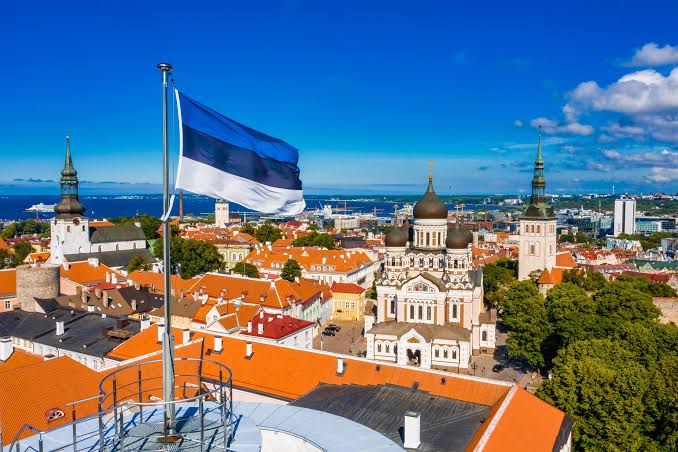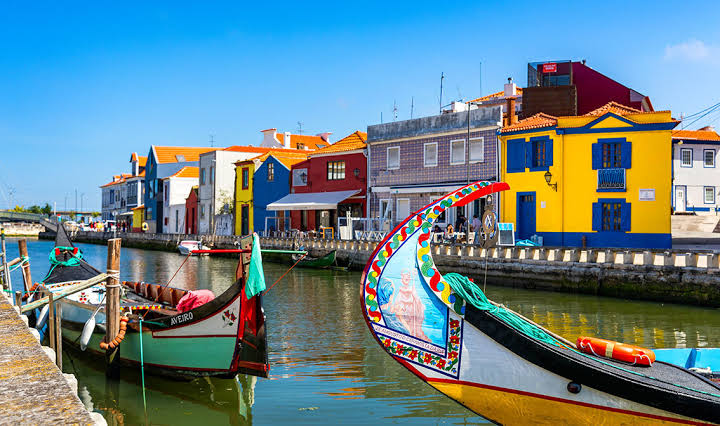
As of 2025, global population trends reflect considerable disparities in gender distribution between countries. While some nations have a higher proportion of females due to factors like life expectancy and migration patterns, others have a bigger absolute number of women owing to their enormous populations. This article addresses both perspectives: countries with the highest percentage of females and those with the largest total female populations.
List Of Top 10 Countries With Highest Females Population In The World 2025
1. Nepal

In 2025, Nepal stands out among the global demographic trends because it has a much larger number of females than males in its population. The Himalayan nation is estimated to have roughly 15.49 million females and 14.13 million males, which results in a sex ratio of approximately 91.23 men for every 100 females. This information is based on projections. This peculiar demographic structure, in which women exceed men by a large margin (more than 1.3 million more females than males), places Nepal among the countries with the highest female populations globally in terms of proportion. Nepal is one of the countries that has the biggest woman population. This imbalance is not a new issue; nonetheless, it has gotten increasingly prominent in recent years, which can be attributed to the complex interaction of socioeconomic variables and the dynamics of society.
2. Latvia

In the year 2025, Latvia continues to be recognised as having one of the most dramatic gender disparities in the world. The percentage of women in the country is much higher than the number of men. Despite the fact that particular real-time rankings are subject to modest variations, Latvia constantly maintains its position as one of the top countries, if not the top country, with a population that is dominated by women. Data for the beginning of the year 2025 reveals that women make up around 53.6% to 54% of the entire population in Latvia. This is a dramatic contrast to the global average, which typically finds a slight male predominance or a near 50/50 split between males and females. This one-of-a-kind demographic landscape is not a recent occurrence; rather, it is a deeply embedded historical and societal trait of the Baltic nation. It has been moulded by a variety of complicated socio-economic elements and historical events.
3. Lithuania

Within the context of the global demographic landscape in the year 2025, Lithuania stands out for a remarkable reason: it is anticipated that the country will have one of the highest percentages of female citizens throughout the entire world. The population numbers of Lithuania reflect a persistent and large imbalance, with women consistently outnumbering men by a significant margin. This is in contrast to the situation in many other countries, which consistently strive for gender parity. Women make up around 52.8% to 53.82% of the entire population of Lithuania, according to a number of different demographic forecasts for the year 2025. This gives Lithuania the distinction of being one of the top countries in the world with a bigger female demographic. This is a continuation of a trend that has been going on for a very long time and has its origins in the intricate interaction of historical, social, and economic elements.
4. Ukraine

In the year 2025, Ukraine is unique among countries around the world because it has one of the biggest percentages of women in its population. This imbalance between men and women has roots in the past, but the ongoing war and its effects have made it much worse, having a huge effect on the country’s social, economic, and cultural life. Ukraine is expected to have about 38.98 million people by the beginning of 2025, with 53.47% of them being women and 46.53% being men. About 20.84 million women and 18.14 million men live in Ukraine, a difference of about 2.7 million more women than men that makes it one of the few countries in the world with the biggest gender gap. There are about 87 males for every 100 girls.
5. Russia

Since 2025, Russia has had a large and stable female majority, which makes it stand out from other countries in the world. While Russia may not have the highest percentage of women in the world compared to smaller countries like Hong Kong or Moldova, it does have the highest overall number of women over men, which makes its gender imbalance a notable feature of the world’s population. The number of people living in Russia is expected to reach 144 million by 2025, with about 66.8 million men and 77.2 million women working. This means that there are about 86.5 males for every 100 females, with women making up about 53.6% of the population, which is a big difference of over 10 million females over males.
6. Belarus

In 2025, Belarus still has a major demographic feature that stands out: a clear female majority among its people. Even though Moldova and Latvia also have high percentages of women, Belarus is still the best known example of a country where historical events and current social and economic factors have caused a big gender gap. Belarus is expected to have between 9.0 and 9.5 million people living there in 2025 (numbers change slightly from source to source, but the general trend stays the same). In this group, women make up about 53.5% to 53.7% of the total population, which means that there are about 87 men for every 100 women. In other words, there are only about 870 men for every 1,000 females.
7. El Salvador

A notable feature of El Salvador’s population in 2025 is that women still make up the majority of the country’s population. Even though El Salvador isn’t expected to have the highest percentage of women in the world (that honour usually goes to smaller countries like Hong Kong or Moldova, or countries like Russia that have had problems with male mortality in the past), the fact that women consistently outnumber men in the country makes it clear that this is the case. The total number of people living in El Salvador is expected to reach 6.37 million by 2025. About 52.5 percent of these are women and 47.5 percent are men. This means that there are about 90.48 males for every 100 females, which means that there are more than 300,000 females than males in the population.
8. Armenia

Even in 2025, Armenia is still an interesting case study in global demographics because it has one of the highest numbers of women in the world. Even though Armenia doesn’t have a very large population compared to Russia or China, the fact that there are many more women than men makes it an interesting country to talk about when people talk about demographics. Based on current predictions for 2025, there will be about 3.02 million people living in Armenia. There are about 87 men for every 100 women in this total population, which means that women make up about 53.5% to 53.6% of the population. This means that there are more than 200,000 more women than men in the country.
9. Estonia

By 2025, Estonia, a small country in the Baltic, will still have a noticeable demographic trait: most of its people will still be women. It’s possible that Estonia doesn’t have the highest percentage of women in the world (smaller areas can have their own statistical oddities), but it always ranks among countries with a clearly imbalanced sex ratio favouring women, making it a famous example on the world stage. For 2025, it is expected that there will be between 1.3 and 1.35 million people living in Estonia. It is always the female population that is higher than the male population; women make up about 52.3% to 53.6% of the total. This means that there are about 87 to 91 males for every 100 girls.
10. Portugal

A constant and noticeable majority of women make up Portugal’s population, which is still a notable demographic trait in 2025. While some countries, like Russia, may have more women overall, Portugal is one of the places with a major gender imbalance because of the percentage of women to total people. This fact about the population is strongly rooted in history and current trends in migration and life expectancy. As of early 2025, there are about 10.4 million people living in Portugal. Girls make up a large majority of this group, making up about 52.4% of the total population, while boys make up 47.6%. These numbers mean that there are about 90.8 males for every 100 girls.






Really appreciate you posting this! Super useful. Keep it up – it’s gonna be awesome! Check my article: https://medium.com/@jamesfrom/how-to-quickly-index-a-page-in-google-a-comprehensive-guide-01b83d6b20bb !
узнать больше [url=https://kra34at.at/]kraken ссылка[/url]
Смотреть здесь [url=https://http-kra-32-cc.ru/]kra33cc[/url]
Главная [url=https://falcoware.com/rus/match3_games.php]скачать матч3 игры[/url]
Всем привет!
Меня зовут Григорий и я обожаю смотреть онлайн мультсериал Симпсоны на сайте https://simpsons.icu
Там много интересных серий, которые Вам понравятся.
Присоединяйтесь!
Может ли ИИ повлиять на жизнь современного Айтишника. И если может то как. Давай проанализируем.
ИИ оптимизирует рутинные задачи айтишника, позволяя сосредоточиться на творчестве.
ИИ откроет новые возможности для обучения.
Работа с ИИ поможет избежать выгорания.
ИИ оптимизирует рабочие процессы.
ИИ улучшит коммуникацию между разработчиками.
ИИ автоматизирует тестирование безопасности.
ИИ откроет новые карьерные горизонты.
А будет так или нет. – покажет лишь время. [url=https://plavskdk.ru/ssylki-na-darknet.html][img]https://san2.ru/smiles/smile.gif[/img][/url]
Запрос от клиента https://ooo-opalubka-msk.ru/services/vykup-opalubki/
В современном строительстве существует 6 основных типов опалубки:
Опалубка: преимущества и особенности https://ooo-opalubka-msk.ru/about/
핸드폰 컬쳐랜드 현금화는 당월 이용한 결제 비용이 모바일 요금으로 빠져나가는 구조다. 결제월과 취소월이와 같은 경우 핸드폰 요금에서 미청구되고 승인 취소가 가능하다. 허나 결제월과 취소월이 다를 경우에는 모바일 요금에서 이미 출금됐기 덕분에 승인 취소가 불가하다.
[url=https://xn--zf0br2llmcu7n68ot4cl1n.com/]컬쳐랜드상품권 기프트카드[/url]
сайт [url=https://kra35-c.cc/]kraken сайт[/url]
Если вы зарегистрируетесь у нас на сайте, то ваша скидка будет сохраняться и подставляться автоматически https://deneb-spb.ru/klipsy
И вы будете видеть ВАШИ цены https://deneb-spb.ru/mufty-i-perekhodniki
Полипропиленовые трубы для водопровода или других инженерных систем пользуются популярностью благодаря их отличным характеристикам https://deneb-spb.ru/sedla
Купить такие изделия можно в этом разделе интернет-магазина «Teremonline» https://deneb-spb.ru/shurup-shpilka
полипропиленовая https://deneb-spb.ru/nastennye-komplekty-pod-smesitel
Сфера применения https://deneb-spb.ru/adaptory-nasadki-i-sverla-dlya-sedel
По запросу 314 https://deneb-spb.ru/obvody
60 https://deneb-spb.ru/ankery
Стандартная классификация полипропиленовых труб https://deneb-spb.ru/dostavka
КУПИТЬ ИНСТРУМЕНТ АВТО В НАБОРЕ https://dominstrumentshop.ru/product/sistema-tumanoobrazovaniya-polietilenovyy-shlang-dlina-15-m-forsunki-15-sht-palisad
Набор инструментов BERGER BG151-1214 https://dominstrumentshop.ru/product/klyuch-razvodnoy-200-mm-crv-oblegchennyy-gross
Мы используем файлы cookie для обеспечения работы всех функций навигации по сайту https://dominstrumentshop.ru/product/klyuch-kombinirovannyy-24-mm-crv-antislip-stels
Продолжая работу с сайтом, вы косвенно предоставляете свое согласие на использование файлов cookie на этом веб-сайте https://dominstrumentshop.ru/product/golovka-tortsevaya-9-mm-dvenadtsatigrannaya-crv-pod-kvadrat-12-hromirovannaya-stels
скрыть https://dominstrumentshop.ru/product/gazovaya-teplovaya-pushka-ghg-30-30-kvt-900-m3ch-propan-butan-denzel
Хороший набор инструментов из Германии оснащен кейсом, четко фиксирующим каждый предмет оснастки https://dominstrumentshop.ru/product/nabor-klyuchey-kombinirovannyh-8-19-mm-8-sht-crv-matovyy-hrom-matrix
Трещотки на 120 зубьев обеспечивают плавный ход с 3-градусным шагом https://dominstrumentshop.ru/product/nabor-klyuchey-kombinirovannyh-55-32-mm-27-sht-crv-fosfatirovannye-sibrteh
Прочный чемоданчик с металлическими креплениями https://dominstrumentshop.ru/product/plug-220-mm-bez-stsepki-denzel
Все компоненты выполнены из хромованадиевой стали, что повышает их эксплуатационные свойства https://dominstrumentshop.ru/product/boek-dlya-steplera-artikul-57400-denzel
Карданы и удлинители (в том числе гибкие) будут полезны при скручивании болтов в местах с усложненным доступом https://dominstrumentshop.ru/product/leska-dlya-trimmera-zvezda-40mm-h-93m-na-din-katushke-flex-cord-denzel
Автомобильный набор инструментов вошел в рейтинг благодаря 3-слойному покрытию из хром-никеля: оно делает оснастку прочнее и повышает удобство чистки https://dominstrumentshop.ru/product/disk-dlya-trimmera-305-h-254-3-lezviya-denzel
Удобный кейс с углублением для рукоятки и хорошей фиксацией каждого предмета https://dominstrumentshop.ru/product/domkrat-gidravlicheskiy-butylochnyy-12-t-vysota-podema-230-465-mm-matrix
Предметы выполнены из легированной стали https://dominstrumentshop.ru/product/klyuch-trubchatyy-tortsevoy-usilennyy-20h22-mm-crv-stels
Популярные товары https://dominstrumentshop.ru/product/gvozdi-dlya-pnev-neylera-otsink-dlina-65-mm-diam-29-mm-2000-sht-denzel
Складной фен Kitfort КТ-3209 https://mkel.ru/products/nalobnyj-fonar-lenta-floodlight-cob-yyc-gy-27
И еще 500 за подтверждение email https://mkel.ru/catalog/antidrony-protivodronovoe-oborudovanie/filter-featured
баллов Плюса https://mkel.ru/discounted/page-2
баллов Плюса https://mkel.ru/products/videoregistrator—zerkalo-xpx-zx968
Ассортимент Электроника, бытовая техника, игры и софт, аудиотехника, посуда, спорттовары, автоэлектроника, товары для фото и видео и многое другое Адреса магазинов Магазины имеются практически во всех городах России Доставка Есть https://mkel.ru/catalog/ip_kamery_nablyudeniya/page-6
Стоимость зависит от размеров и количества товаров Каталог Есть Официальный сайт mvideo https://mkel.ru/products/lazernyj-stroitelnyj-dalnomer-ermenrich-lr1500
ru https://mkel.ru/products/8-kanalnyj-podavitel-dronov-ryukzak-antidron-gp-400-8-400w-v5
Компания «Минимакс» и сеть магазинов «Электрик» имеют свыше 100 офисов продаж и представительств по всей территории России и филиал в Казахстане https://mkel.ru/products/portativnyj-perezaryazhaemyj-kompressor-smart-air-pump-ap2-2000mah
site link [url=https://russian-traditional-clothes.com]russian traditional clothing[/url]
helloI like your writing very so much proportion we keep up a correspondence extra approximately your post on AOL I need an expert in this space to unravel my problem May be that is you Taking a look forward to see you
whoah this blog is excellent i love reading your articles. Keep up the good work! You know, many people are searching around for this information, you can aid them greatly.
I have noticed that online diploma is getting popular because getting your degree online has developed into a popular selection for many people. Quite a few people have not really had a chance to attend a normal college or university yet seek the raised earning possibilities and career advancement that a Bachelors Degree offers. Still other people might have a college degree in one training but wish to pursue another thing they now possess an interest in.